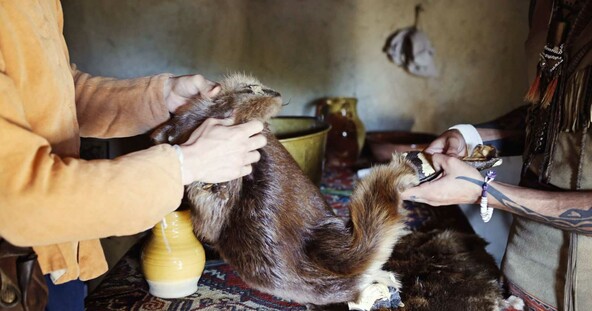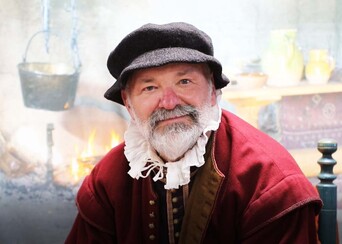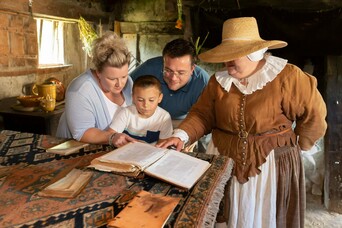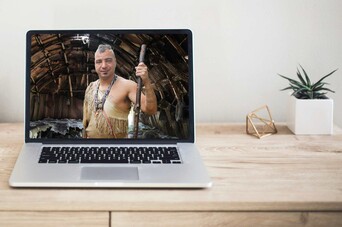
National History Day
Plimoth Patuxet Museums is proud to support National History Day. We are excited to work with students and teachers on projects that explore 17th-century colonial and Indigenous history.
What is National History Day?
National History Day (NHD) is a year-long academic program focused on historical research, interpretation and creative expression for students in Grades 6-12. By participating in NHD, students become writers, filmmakers, web designers, playwrights and artists as they create unique contemporary expressions of history. NHD teaches students to:
Conduct in-depth research
Use primary and secondary sources
Work with libraries, archives, museums, oral history interviews, and/or historic sites
Analyze and interpret their findings
Write and present their historical research
Let's brainstorm! Below are a few project ideas:
Diplomacy and Community Building in early New England, including the March 1621 alliance between Plymouth Colony and Pokanoket
The role of Tisquantum (Squanto), Epenow, Coneconam, and other Native people kidnapped from their homelands in early diplomacy.
The diplomacy leading up to and during the 1621 Harvest Feast (known as the “First Thanksgiving”)
The signing of the Mayflower Compact as an example of debate, conflict resolution, and community building
The Bridgewater Purchase (1649)
King Philip’s War (1675-1678)
The Environmental History of Historic Plymouth Colony and the Wampanoag Homeland
The impact of Mayflower’s arrival in New England (1620)
The role of religion in early New England
There are many more NHD topics with connections to Plimoth Patuxet Museums. Here are a few resources to help you discover a deeper understanding of our Nation’s past.
Primary Sources

How do we bring history alive for today’s learners? We start with primary sources - the building blocks of history! Primary sources can include written documents, archaeology, material culture, landscapes, oral histories, artworks, and photos.
Homework Help

Homework? We can help! Plimoth Patuxet historians have written these essays to help you with your homework and projects.
Digital Resources

Digital resources bring history alive in classrooms across the globe. Explore comprehensive multimedia sources to enliven and support your in classroom lessons.
You Are The Historian
Investigate the First Thanksgiving with this popular interactive game. Developed in conjunction with FableVision Studios and an Indigenous Advisory Committee, players will explore Wampanoag life prior to European settlement and the year leading up to the 1621 harvest feast, known as the “First Thanksgiving.”